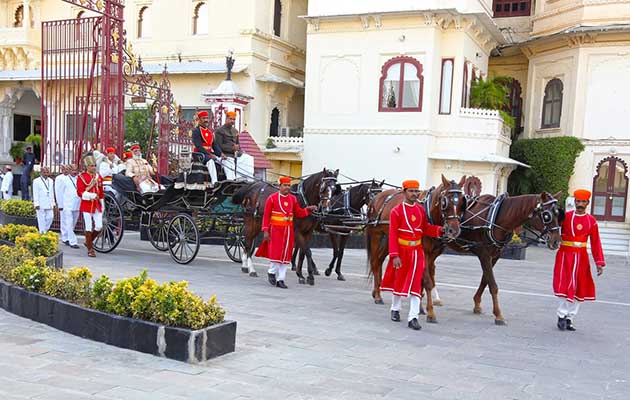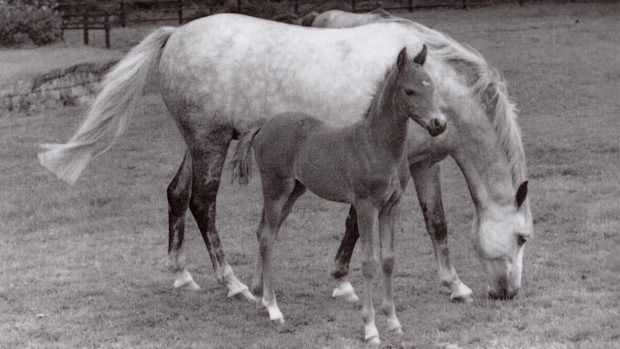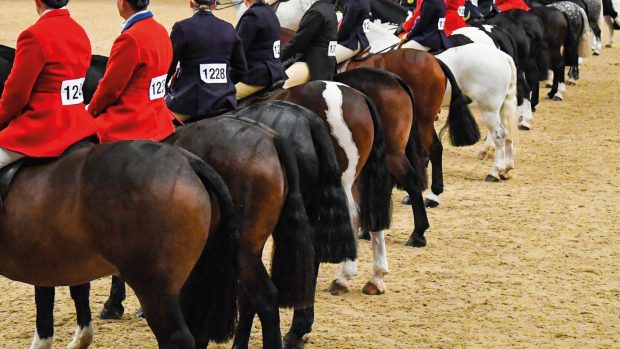The House of Mewar in Rajahstan is one of the world’s oldest surviving dynasties and its history is inexorably linked to that of the striking Marwari horse.
Time and modernisation have not diminished the Mewar’s respect for this firey and distinctive breed. At the recent Ashwa Poojan Festival, the house’s 76th custodian — the Maharana, Shriji Arvind Singh Mewar — held a ceremony to worship the Marwari, paying respect to the contribution it has made to the survival of the Rajput race.
In turn, the Maharana has also made his contribution to the survival of the Marawaris. For centuries a prized mount in battle, by the 1930s the breed had begun to deteriorate — and by the early 2000s only a few thousand purebreds were thought to remain.
With quality breeding stock increasingly hard to come by, the Mahara established a stud at his Shirkabadi stables in Udapuir. The stud now stands nine Marwari stallions, most of which have been homebred.
“Shriji has always owned a few Marwaris, but we normally bred horses for polo,” says his son-in-law Lokendra Singh, an international polo player and former captain of India. “We had a very successful polo team for many years and then somewhere down the line we realised times were changing for the Marwari breed.”

With the decline in interest in working animals, the Marwari’s role diminished and while devotees still kept the breed, there was no official studbook and the quality of the animals declined.
“The people who owned them had the money — because horses are expensive to keep — but not necessarily the knowledge,” he says. “A ‘different’ type of horse became viewed as a good horse in the Marwari [showing] circuit and Shriji wanted to contribute towards its improvement.
“We bred some stallions and kept a few mares and eventually developed a string of stallions which were accessible to people. They turned out to be beautiful, proportionate horses and they have had a good impact on the Marwari breeding programme.
“We have about 50 horse in total, but it was mainly stallions we were looking to stand — that was our aim to begin with and we’ve stuck to that — there were no good stallions left and now it’s changed. Other people are also breeding some nice horses and the Marwaris have been able to keep their reputation as some of the best in India.”

Easily recognisable by their inward-turning ear tips, the bold breed’s temperament does not lend it so well to use as a sports horse, but its role in showing, horse safaris and — more recently — endurance is growing once more.
Part of their traditional ceremonial role also still remains.
“In India, the groom always gets carried into the wedding on a horse or an elephant,” explains Lokendra. “Some people use cars now, but generally there is always a horse — that part of their utility is still very much active.”
Uncommon for such a naturally ‘hot’ horse, they are also the chosen mount of local police forces.
“In every city the police horses are Marwaris, and all forces have mounted police,” sayd Lokendra. “They’re brave and they don’t get scared of traffic.”
The breed is also providing a particular boost for tourism in the Mewar, proving the ideal mount for tours of the region’s historic forts and palaces.
“They are pretty good at [long distance riding],” Lokendra says. “They are very comfortable and carry themselves nicely , they’re sensitive and very few of them buck or spook too much. They are a little hot and they’re quite active — if you gallop them they want to keep going. But for safari it’s ideal as you don’t have to keep kicking.”
Continued below…

Incredibly rare African wild ass foal born in UK (and it’s super cute)
Marwell Zoo is delighted by its latest arrival, who is already running rings around its mother

5 horse breeds you may never have heard of
Check out these strange but beautiful horses
They’re distinctive temperaments can also quickly endear them to visitors, although they can have a reputation for tending to bond one-on-one.
“It’s perhaps because of the way they are often raised individually,” Lokendra says. “Some are bred in bigger studs but often they are bred in the country by someone who owns one mare, and the foal grows up at home with the children. They respond very well to a rider they know and there is a lot of affection and attachment from the horse’s side. Once you keep them, you can easily fall in love with them.”
While still classified as a rare breed, it’s fair to say the Marwari’s are now “thriving again”.
“India has suddenly become cash rich and it is a status symbol to have horses,” he adds. “There are lots of new breeders and horse lovers, so there has been a comeback for the horses again.”
For all the latest news analysis, competition reports, interviews, features and much more, don’t miss Horse & Hound magazine, on sale every Thursday





